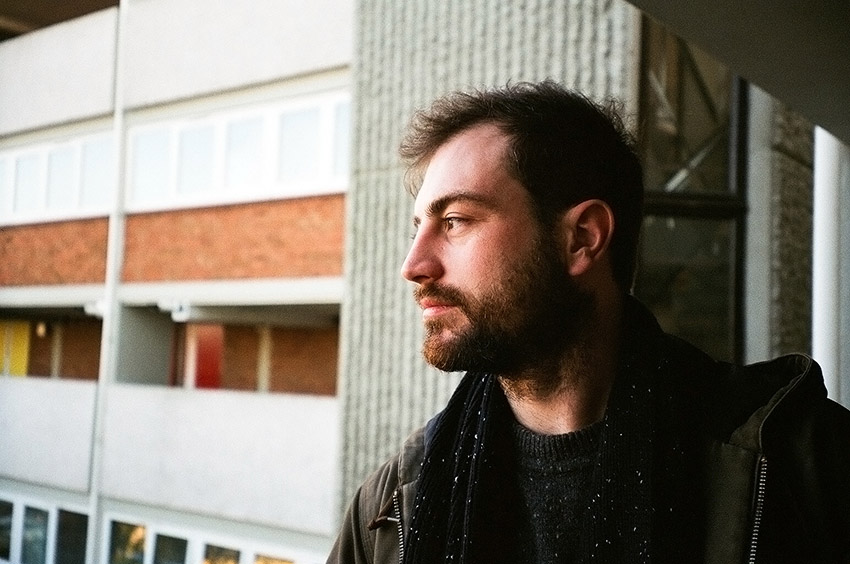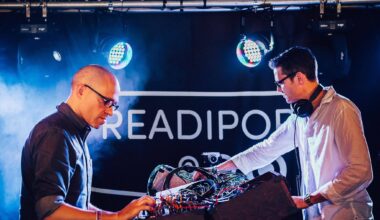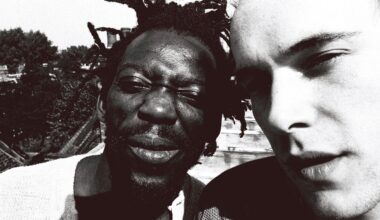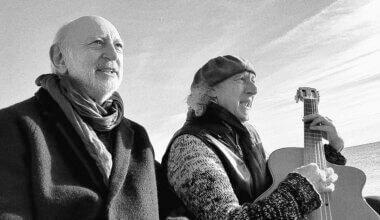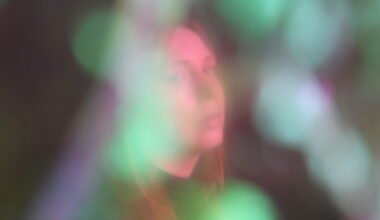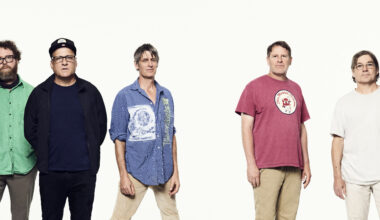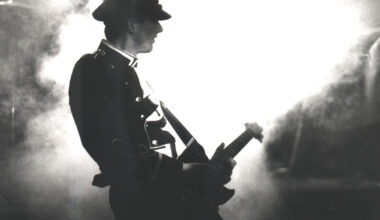Have you ever been to a live show and wondered where, as if by magic, the images and graphics and fancy lights come from? If you’ve seen Jon Hopkins or Blanck Mass this summer, you’ve been wowed by visual artist Dan Tombs
You know how it is. Stick a musician on a stage and they’re the centre of attention, whether they like it or not. And while what’s coming out of the speakers might be dynamite, if there’s machine wrangling rather than posing with a guitar, where do the adoring public put their eyes?
Many electronic acts have tried to address the situation with a big old screen and some sort of film show or slide show, but more often than not it’s just optical fluff. Say hello then to Dan Tombs, a new breed of visual artist whose work is as explosive as the tunes it rubs along with.
Dan is at the sharp end of conceptual visuals and his ideas are shaking up the way that some of the most exciting names in electronic music are approaching their live performances. Working alongside the likes of Jon Hopkins, Blanck Mass, Factory Floor, East India Youth, Luke Abbott and even our guitar-toting pals The Charlatans, to name but a few, what Dan does is truly mind-boggling stuff. But before we boggle minds, a bit of a rewind.
Dan Tombs’ journey began with the toss of coin. What to study at university, Geography or Art? Art won and, in the early 2000s, a place at Norwich Art School, now Norwich University of the Arts, was duly taken up.
“I was studying painting,” explains Dan. “I was copying film stills and turning them into abstract works, but then I realised that the photography and film I was using as source material was much more interesting than my paintings, so in my final year I worked entirely with Super 8.”
Super 8 was an easy-to-use mass market film format popular with home movie enthusiasts in the 1960s and 70s, and much loved by experimental film-makers ever since thanks to its lush, saturated images. Dan’s degree show consisted of five Super 8 projectors, each with a 50-foot loop of film. The loops were films of projectors, shot by Dan, which over the course of the show began to disintegrate due to the delicate nature of the format. In the end, there was almost nothing left. Very structuralist.
It was at art school that Dan struck up a friendship with Luke Abbott, who had set up an electronic music night in a Norwich city centre bar with some friends and invited Dan to bring along his projectors.
“I put some loops up, but then I thought, ‘That’s a bit boring’,” says Dan. “So I wondered what would happen if I started manipulating the film.”
With a row of projectors all pointing at the same spot, Dan discovered he could “mix” live images by blocking off lenses with his hands. It was almost like DJing but using images rather than records. Around this time too, he became aware of the chiptune and 8-bit scenes, hardware hacking and punk electronics and the art of pulling keyboards apart. And he started wondering if the sort of things you could do with kit that made sounds, you might also be able to do with kit that made pictures.
“I picked up a lot of games consoles,” he says. “Mainly Segas and Nintendos, thinking they were roughly the visual equivalent. They’re in that little bubble of electronics where they’re complicated enough to do something interesting with them, but not too complicated that you can’t interact with the circuit boards.”
Must have been quite a thing when he first cracked a console open and realised that by poking around inside, shorting circuits, he could make a screen explode with patterns and colours and interference?
“It was incredible,” laughs Dan. “It was like liquid light! I remember one Sunday afternoon I went to this big second-hand shop with Luke Abbott and we bought a bunch of old consoles, took them back to his, plugged them in, popped the lids, and just stuck our fingers in. We were trying to run the video signal through guitar pedals and I was thinking, ‘A distortion pedal will distort the video… won’t it?’.”
It won’t, but a video synthesiser will, of which a hacked games console can be a basic if essentially random version. And now we arrive at the mind-blowing part of what Dan Tombs does.
“In the same way that a sound oscillator makes a wave, a video oscillator will make a visible wave,” he explains. “So you have an oscillator for red, an oscillator for green, an oscillator for blue, and then you can patch those together and start making…”
Hang on. So you put your source material through a video synth and manipulate the colours to make something new? Nope.
“What a video synth does is generate images from nothing,” he continues. “There is no actual live footage and nothing is filmed, which is what I love. It’s why I am so interested in circuit bending and structuralist film-making and lensless photography…”
Right. Going to stop it there again. Lensless photography?
“It’s not animated because it’s not drawn and it’s not filmed,” says Dan. “You’re working out how to create imagery from what you have in front of you. Which is just a bunch of boxes… and feedback. Feedback’s the thing that really excites me.”
Struggling to keep up? Yup. So think of it like a photocopier. Press the copy button, then put whatever comes out back in, magnify it, and press the button again. And again. And again. It picks up all the dust off the machine and the grain in the paper, and after a while an abstract image starts to appear.
“You can do it with sound and audio mixers,” explains Dan. “You would wire an output to an input of an audio mixer, start cranking the EQ and the gains, and suddenly you’d get noises flowing around these mixers, and the shittier the mixers the more interesting the noises they would make.”
After art school, Dan found himself working in galleries and pondering how to use his new-found skills to survive as a visual artist. His pal Luke Abbott was meanwhile snapped up by Trevor Jackson’s Output Recordings imprint and he invited Dan to make a music video for his 2006 debut release, ‘B’,B,B,B,B,B,B,B,B,B,B,B,B,B,B,B.
“So I made a music video for Luke using all the Segas,” says Dan. “Trevor Jackson was amazing and he got it straight on to MTV2. Did I see it on the telly? I’ve never seen MTV2 in my life, but I really wanted a copy of it with the MTV icon at the top of the screen. It made me realise there were more opportunities for me in the music business than there were in working in galleries. And also that there’s a commercial aspect to visual work, which is sort of sad but necessary.”
In a nutshell, you might get paid.
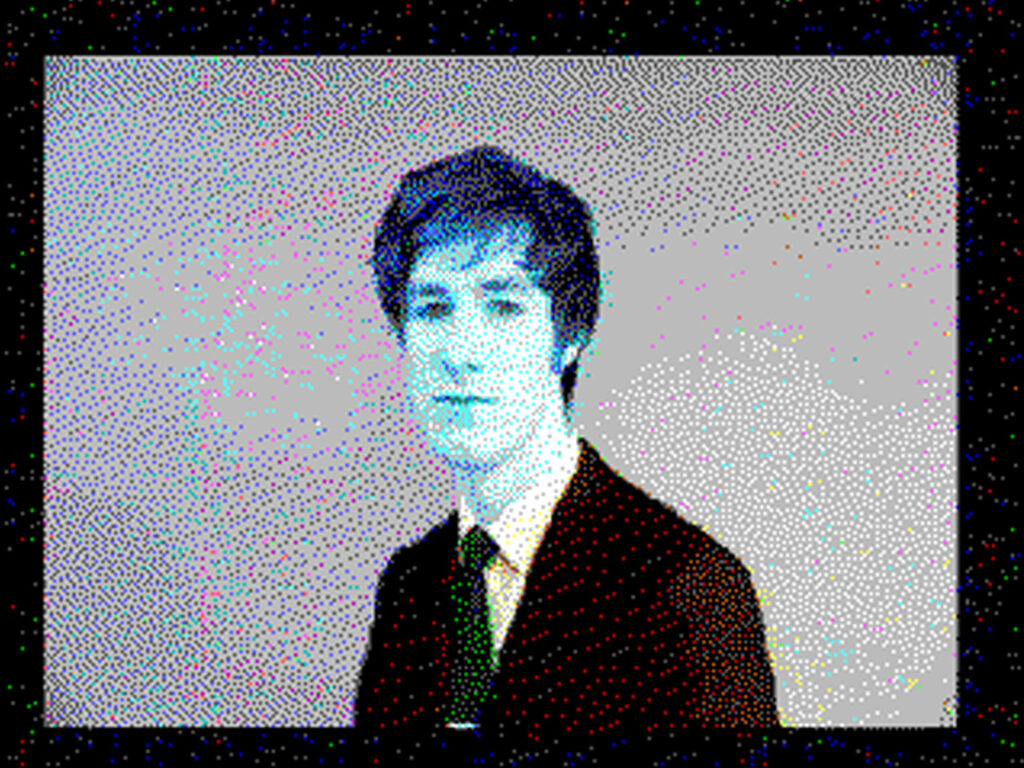
“Yeah,” nods Dan. “I remember around that time people saying, ‘We would love you to come and show your work in Germany’. I’d say, ‘Fantastic, that’s great, what budget do you have for the show?’. And they’d say, ‘Oh, well, none really’. And I’m like, ‘So I’m supposed to pay for my flights and accommodation?’. But then when Luke signed to Border Community, James Holden and the guys there took me under their wing, which I’m really grateful for. They started flying me around Europe to do the visuals for their parties, which was a huge leg-up.”
Through the Border Community connection, Dan met Factory Floor, which was the start of a new kind of relationship. Rather than club nights and parties, Factory Floor asked him to create something around specific live shows. And rather than it being, “You set up over there and don’t bother us”, it increasingly became a collaboration.
“That’s how I prefer to work,” says Dan. “It’s a long time since I’ve done the improvised thing, turning up with a whole bunch of content and winging it. I’m using analogue gear, but I’m sampling it all at home. For a while, I was traveling with loads of analogue video stuff, but now I’m using the laptop to sequence everything.”
In most instances, Dan’s shows begin in the studio, first by generating the raw visuals and then by cutting these up into bar-length loops. He is able to sequence them live, reacting to the changes in the music in the same way that musicians do.
“I have a hotel room set-up and I often rehearse before shows,” he says. “I’ve got really good at hacking tellies in hotels.”
Dan provided the trippy graphics for Factory Floor’s acclaimed ‘Two Different Ways’ video and then hooked up with Jon Hopkins for the live shows around his Mercury Prize nominated ‘Immunity’ album. Most recently, he’s been working with Benjamin John Power, aka Blanck Mass, on his European dates.
“Blanck Mass is a great project to be involved with,” offers Dan. “We’ve got a lot of shared ideas and Benjamin lets me be very self-indulgent. We spend hours talking on Skype, developing ideas, him sending me bits of noises, me sending him bits back, and slowly we decide what we want to achieve. He wanted things to be quite disgusting, so I’ve done a lot of work with cornflour and water solutions in speaker cones. When you run a sine wave into that, it turns into what’s called a non-Newtonian fluid, it turns into a solid. It doesn’t follow the laws of physics. It breaks them.”
So it’s about filming again, not generating images from boxes? That’s interesting.
“But it’s a very small microcosm. I mean, if you think about it, the speaker cone is almost a video synth that’s generating a wobbly colour. I’m trying to see if I can pull that stuff off live, so setting up multiple speaker cones with the cornflour and with cameras on rostrums…”
Whatever next? Record sleeves? The recent East India Youth album, ‘Culture Of Volume’? That’s a Dan Tombs image on the front.
“I hired a photographer to take the source material and we got over 300 pictures of William Doyle in his suit,” he explains. “We found the one that we liked, I gave him a haircut in Photoshop, and then I manipulated the image using video capture software on an old Commodore Amiga 1200.”
Which again is taking things to another level. A mashing together of old and new tech resulting in a quantum shift from creating visuals for entire nights down to one, single, solitary image.
“It was about five months’ work, not solid, but from start to finish,” he laughs. “William was inspired by the work that Warhol did with the Amiga, especially the Debbie Harry portraits. He’d read about it and then he came to me and said, ‘How are you with Amigas?’. And I said, ‘Well, let’s buy one and see!’.”
So are we at maximum visual now or is there more to come?
“I want to do some really ambitious stuff,” he declares. “I’m starting to work with lights more, which is really tantalising. I’m starting to think there are going to be occasions when I don’t do any video and I just work with lights. Video is a way to do something that complements everything around it, but being able to control the whole atmosphere of the room, the whole environment, that really interests me.”
For more about Dan Tombs, visit www.dantombs.net
